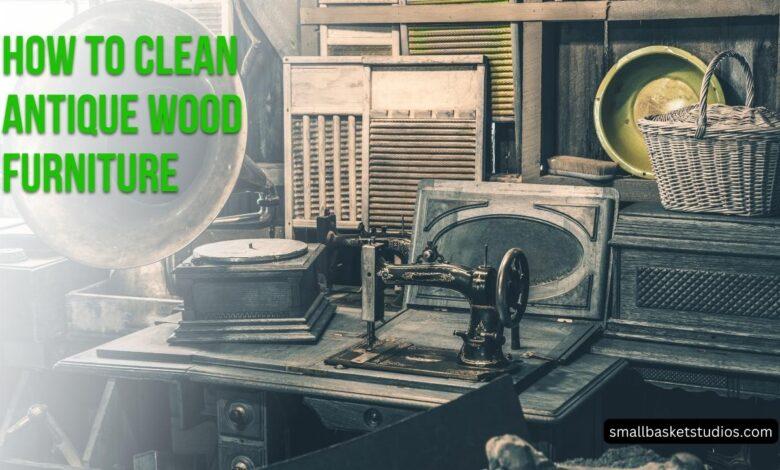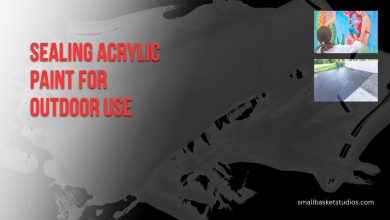How to Clean Antique Wood Furniture: Tips from a Professional

Antique wood furniture brings unmatched warmth, history, and character to any space. As precious artifacts of times past, these pieces connect us to previous generations and deserve special care and handling. From dusting and polishing to repairing minor blemishes, proper cleaning keeps cherished antique wood furniture looking its best while preserving its unique original finish. This complete guide teaches you everything you need to know to care for your antique wood treasures.
The Art of Caring for Antique Wood Furniture
Valuing the Craftsmanship of Yesterday Antique wood furniture represents excellent old-world craftsmanship that is rarely seen today. Before mass production made furniture readily disposable, skilled artisans produced each piece by hand, carefully selecting and shaping wood from trees that grew for decades or even centuries. The patina and wear that comes with age only increase the beauty and wonder of antique furniture. Once lost due to damage or improper cleaning, the nuanced stain colors, textures, and sheen of original finishes cannot be replicated. To retain their magic, antiques must be treated delicately. Learning proper care requires understanding the materials from which they’re made.
How Antique Furniture is Different
Unlike new production furniture, antiques were created without modern protective barriers from wood stains or seals. This makes them more vulnerable to absorption of dirt, oils, and liquid spills which can penetrate unsealed, raw wood surfaces. Cleaning products and techniques that are perfectly safe for sealing modern finishes can cause irreversible color changes, bleaching, etching, and other damage to the natural wood grains of antiques. Even humidity and heat can crack and warp their delicate materials. By learning appropriate methods tailored specifically to antique wood furniture, however, you can safely clean dirty surfaces, remove stains, and restore pieces without causing harm.
First Steps: Understanding Your Antique’s Finish
To determine the best cleaning approach, you must identify your antique wood furniture’s existing finish. Common types include:
- Oil and Wax – Natural penetrative finishes that nourish wood; require conservative cleaning
- Shellac – Derived from insect secretions; susceptible to alcohol but repairable
- Varnish – Brush-applied resin that dries hard; prone to cracking over time
- Lacquer – Fast drying and durable though prone to scratches/damage from cleaners
- Stain – Pigmented finish amplifying wood grain color/texture
Examining wear patterns and visible wood pores helps determine the finish. Seek guidance from antique experts if unsure. Some original finishes may have been replaced or altered over decades, so verify through inspection. Appropriate methods also depend on wood type – mahogany, oak, cherry, pine, etc. Delicate furniture requires extra precautions like padding vulnerable edges and carved details to prevent fractures and dents during cleaning.
By identifying materials first, you reduce risks when progressing through basic cleaning steps:
- Surface Dusting
- Dirt and Grime Removal
- Stain Treatment
- Protective Care
Now let’s explore process specifics…
Gentle Surface Dusting
Regular light dusting prevents buildup of particles that can scratch aged wood surfaces when pressed underfoot or shifted by moving objects. It also cleans away insect remains that can bore new holes into furniture. But vigorous rubbing or wiping can damage fragile finishes. When surface dusting antiques:
- Use a Feather Duster – Feather dusters with soft plumes catch dust without abrasion
- Or a Microfiber Cloth – Extremely fine woven fibers snag allergens without rough texture
- Work Methodically – Section by section, top to bottom to avoid spreading dust
- Work With Care Along Edges – Avoid catchy fabric that can detach intricate carvings
- Clean Undersides/Drawers – Dust collects everywhere so don’t neglect hidden spaces
Avoid commercial dusting sprays which can react with finishes. And skip using standard dry cloths that simply move dust around. The gentle methods above lift debris effectively without putting antique furniture at risk.
Removing Ground-In Dirt and Grime
While surface dusting maintains antique furniture’s top layer, cleaning deeper dirt and grime requires additional periodic attention. Oils from hands and general use along with smoke residues if candles or fires once burned nearby can create unsightly dark buildup over time. To remove while protecting fragile finishes:
- Try Salted Bread – The subtle abrasion lifts embedded dirt without harsh scrubbing
- Or White Vinegar-Dipped Cotton Pads – Acetic acid cuts grease and oils without bleaching
- Rub Lightly With the Wood Grain – Never scour against the grain which risks scratching
- Work In Sections Until Clean – Take time to lift grime without grinding it around
Once clean, salt or vinegar residue could continue reacting with unfinished wood, so… - Wipe Away Residue – Use a dry soft cloth to remove any leftover cleaning solution
Check for color lifting or surface roughening, stopping immediately if noticed. The goal is cleaning – not removing the aged patina that defines antique charm.
Treating Stains, Scratches and Blemishes
Discolorations from water marks, ink, mildew or mysteries of the past don’t have to become permanent fixtures. Well-chosen treatments lift or minimize nearly any stain without endangering antique furniture.
For Water Stains:
- Place Brown Paper Bags Over Marks – The bags draw moisture out for slow, safe drying
- Iron the Bagged Area – Use medium heat to hasten extraction without burning the wood
- Check Frequently Until Gone – Repeat the process until no moisture transfers to the bag
For White Marks and Rings:
- Rub With Toothpaste or Mayonnaise – Compounds in these gently lift discoloration
- Wipe Clean – Residue removal avoids further reaction with the wood over time
For Mildew Stains:
- Wipe With Tea Tree Oil Solution – The natural anti-fungal kills and removes mildew
- Dry Promptly – Denying moisture prevents future mildew growth
For Ink Stains:
- Use Oxalic Acid Solution – Available at hardware stores; lifts stubborn ink stains
- Exercise Caution – Test first and follow directions to avoid burns from toxicity
For Scratches and Gouges:
- Consult Professional Refinishers – They fill damaged spots and blend repairs
DIY repainting risks ruining antique value, so call in experts here. For all stains, work slowly and gently, monitoring effects before proceeding. And address the underlying cause – whether a leaky roof, crowded storage, or other issue to prevent recurrence.
Protecting Antique Furniture Finishes
The right protective care fortifies antique furniture against recurring dirt buildup, scuffs and stains while locking in the original aged finish. But many commercial products contain harsh solvents, acids, waxes or silicone that seep into unsealed wood, causing hazy residue buildup and other damage over time. Instead, sustain antique beauty safely with:
- Polishing Oils – Penetrating oils like lemon oil nourish wood cells while amplifying shine
- Or Cream Polishes – Gentler than wax with carnauba and beeswax to repel spills
- Avoid Aerosol Sprays – Harmful propellants sank into unsafe places
Apply protector thinly using soft cotton cloths following the wood grain. Over-saturation risks excess absorption which attracts dirt faster. Buff gently to raise luster. Re-apply polish once or twice annually to fortify the defense. With careful handling and conservative cleaning focused only on genuine need, an antique’s integrity sustains for decades to come.
Frequently Asked Questions
About Antique Furniture Care Taking proper care of your antique furniture prevents damage, while keeping it looking beautiful. Here are answers to the most common questions about safely cleaning antiques:
What cleaning method should I avoid with antique furniture?
Avoid commercial spray cleaners and dusting products, abrasive powders or scouring pads, undiluted vinegar, bleach products, ammonia, or excess water as these can all damage fragile antique wood and finishes.
Can I use Murphy Oil Soap on my antiques?
While Murphy’s Oil Soap effectively cleans unfinished wood antiques, it can leave residue on original finishes, attracting dirt over time. Use salted bread or white vinegar instead. For polished wood, try cream cleansers without detergents.
What is the safest way to dust antique furniture?
Use a feather duster or a microfiber cloth to gently trap and lift away dust without grinding it into the antique wood finish. Vigorous rubbing risks abrasion damage. Work methodically section to section.
My antique has a white stain ring – help! How can I remove it?
Dab mayonnaise or toothpaste on the white mark, let sit briefly to lift the stain, then gently wipe away any residue. Test first to ensure color safety. Or place brown paper bags over the mark, iron with medium heat and replace bags until gone.
Can I refinish a damaged antique using DIY methods?
DIY refinishing risks permanent damage. Consult professional antique restorers to preserve value. They use reversible methods for repairs to seamlessly integrate without altering original finishes whenever possible.
By tailoring cleaning techniques to suit antique furniture’s specialized needs, you can safely remove dirt, stains, and new blemishes without harming old irreplaceable craftsmanship’s fragile finishes. With regular conservative care, your wood antiques survive to enchant future generations.





One Comment